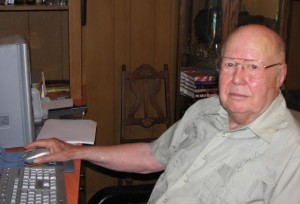Alex Constantine - July 22, 2008
 New York Times Covers Up for “Confused” US Military Torturers
New York Times Covers Up for “Confused” US Military Torturers
By David Walsh
www.wsws.org, 19 June 2008
On Monday the US Senate Armed Services Committee released documents revealing that preparations to systematically torture inmates at Guantánamo Bay, Cuba were set in motion by officials high up in Donald Rumsfeld’s Defense Department in July 2002, half a year after the internment camp commenced operations.
That month the office of Defense Department general counsel William Haynes inquired into a program aimed at training American military personnel to resist interrogation if captured, known as Survival Evasion Resistance Escape (SERE). In response, Haynes was sent an extensive list of interrogation methods, ranging from facial slaps to waterboarding, “degradation” and “sensory deprivation.” It was a shopping list, in short, of techniques of physical and psychological torture. A number of these cruel methods were introduced into Guantánamo, and later, US-run prisons in Iraq.
Among the material released Monday are minutes of a meeting on “Counter Resistance Strategy” that took place October 2, 2002 at Guantánamo attended by 10 military and intelligence agency officials. Central to the 70-minute meeting was a discussion of “methods to overcome resistance” by detainees, which rapidly became an exchange of ideas about various methods of physical and psychological torture, their respective effectiveness and how to hide their usage from the International Red Cross and other prying eyes.
In an article published Tuesday, Mark Mazzetti and Scott Shane of the New York Times, as the headline of their piece indicates, claim to find that the “Notes Show Confusion on Interrogation Methods.” In the course of their article, the authors make this remarkable assertion, “The minutes of the October 2002 meeting give an extraordinary glimpse of the confusion among government lawyers about both the legal limits and the effectiveness of interrogation methods.”
A reading of the meeting’s entire record suggests, on the contrary, that the officials involved were not the slightest bit “confused.” They fully intended to bend or break the rules on abuse and torture of detainees—that’s why the meeting had been convened; underscoring that fact, the participants were very concerned about avoiding detection and possible legal action.
Only a week earlier, a high-level delegation had paid a visit to Guantánamo, including Haynes; David Addington, counsel to Vice President Dick Cheney; CIA General Counsel John Rizzo; Michael Chertoff, current secretary of Homeland Security and then assistant attorney general for the Criminal Division at the Department of Justice, and others.
According to The Consortium Report web site, “In his new book, Torture Team, Philippe Sands writes that the Washington gang came down, in part, to learn how the military was treating a suspect named Mohammed al-Qahtani. ‘They wanted to know what we were doing to get to this guy,’ recalled [Major General Michael] Dunlavey. [Lieutenant Colonel Diane] Beaver said that the message was loud and clear: do ‘whatever needed to be done.’ In Sands’ words, ‘a green light from the very top—from the lawyers for Bush, Cheney, Rumsfeld and the CIA.’” The Times article makes no mention of this.
Moreover, there is also a clear connection between the inquiry by Haynes a little over two months earlier and the October 2 meeting, because the latter begins with a presentation by a Behavioral Science Consultation Team (BSCT), made up of psychologists who assist in military interrogations, consisting of a Major Burney and Major John Leso, on SERE psychological training.
A discussion ensues about “harsh techniques.” The BSCT report continues: “Psychological stressors are extremely effective (i.e., sleep deprivation, withholding food, isolation, loss of time).”
A “Colonel Cummings” intervenes: “We can’t do sleep deprivation.” Beaver, the top military lawyer at Guantánamo, responds, “Yes, we can—with approval.” Amnesty International classifies sleep deprivation for any prolonged period of time as a form of torture.
Beaver continues: “We may need to curb the harsher operations while ICRC [International Committee of the Red Cross] is around. It is better not to expose them to any controversial techniques.”
Dave Becker of the Defense Intelligence Agency comments: “We have had many reports from Bagram [air base in Afghanistan, notorious for violence and torture against prisoners] about sleep deprivation being used.”
Beaver: “True, but officially it is not happening. It is not being reported officially. The ICRC is a serious concern. They will be in and out, scrutinizing our operations, unless they are displeased and decided to protest and leave.”
CIA lawyer John Fredman, the guest of honor, speaks up. “The CIA is not held to the same rules as the military,” he argues. “In the past when the ICRC has made a big deal about certain detainees, the DOD [Department of Defense] has ‘moved’ them away from the attention of ICRC. Upon questioning from the ICRC about their whereabouts, the DOD’s response has repeatedly been that the detainee merited no status under the Geneva Convention.”
Fredman then launches into a deceitful, self-serving discussion of torture and the laws on torture. “Under the Torture Convention, torture has been prohibited by international law, but the language of the statutes is written vaguely. Severe mental and physical pain is prohibited. The mental part is explained as poorly as the physical. Severe physical pain is described as anything causing permanent damage to major organs or body parts. Mental torture is described as anything leading to permanent, profound damage to the senses or personality. It is basically subject to perception. If the detainee dies, you’re doing it wrong.”
Fredman goes on: “Any of these techniques that lie on the harshest end of the spectrum must be performed by a highly trained individual. Medical personnel should be present to treat any possible accidents.... When the CIA has wanted to use more aggressive techniques in the past, the FBI has pulled their personnel from the theatre.”
Beaver comments, “We will need documentation to protect us.”
“Yes,” agrees Fredman, “if someone dies while aggressive techniques are being used, regardless of cause of death, the backlash of attention would be severely detrimental. Everything must be approved and documented.”
Becker intercedes, “LEA [law enforcement agency] personnel will not participate in harsh techniques.” Beaver rejects this, “There is no reason why LEA personnel cannot participate in these operations.”
Should the sessions be videotaped, the participants wonder out loud? Becker of the DIA says, “Videotapes are subject to too much scrutiny in court.” The CIA’s Fredman agrees: “The videotaping of even totally legal techniques will look ‘ugly.’”
He goes on, sophistically, to assert, “The Torture Convention prohibits torture and cruel, inhumane, and degrading treatment. The US did not sign up on the second part, because of the 8th amendment [forbidding cruel and unusual punishment]....This gives us more license to use more controversial techniques.” The Times authors do not refer to this discussion of getting around international and US law.
The participants go on to talk about the “wet towel” technique, known more widely as “waterboarding.”
Fredman says, “If a well-trained individual is used to perform this technique it can feel like you’re drowning. The lymphatic system will react as if you’re suffocating, but your body will not cease to function.
It is very effective to identify phobias and use them (i.e., insects, snakes, claustrophobia). The level of resistance is directly related to a person’s experience.”
Major Burney comments, “Whether or not significant stress occurs lies in the eye of the beholder. The burden of proof is the big issue.” The Times makes no mention of the discussion of waterboarding and “phobias,” a conversation worthy of the Gestapo.
Beaver raises the subject of creating an “imminent threat of death.” Fredman replies, cold-bloodedly, “The threat of death is also subject to [legal] scrutiny, and should be handled on a case by case basis.”
We go into these details because the Times’ superficial article omits many of them and the authors rely on the fact that most of their readers will not have the opportunity to read the original document.
A memo written three weeks after the October 2 meeting, from the deputy commander of the Defense Department’s Criminal Investigation Task Force, Mark Fallon, reads: “This looks like the kinds of stuff Congressional hearings are made of.” Fallon notes that Beaver’s comments “give the appearance of impropriety” and that “Other comments ... seem to stretch beyond the bounds of legal propriety.”
Fallon goes on, “Talk of ‘wet towel treatment’ which results in the lymphatic gland reacting as if you are suffocating, would in my opinion, shock the conscience of any legal body...Someone needs to be considering how history will look back at this.”
A series of military lawyers, rendering their opinions in November 2002, concluded that a number of the measures proposed were prohibited by law. An Air Force lawyer suggests that “Some of these techniques could be construed as ‘torture.’” Another argues that the severest techniques may constitute “criminal conduct.”
Fallon’s chief legal adviser, Sam McCahon, writes: “Therefore, any conduct that would constitute cruel and unusual punishment would be prohibited by the Constitution and would be illegal.” The Defense Department ignored these opinions and introduced various methods of torture into the US-run facilities.
Taken as a whole, how does this process constitute “confusion” on the part of the officials present at the October 2 meeting, as the New York Times suggests? The Haynes-Rumsfeld-Cheney faction sought out and put in practice, quite consciously and “with malice aforethought,” barbaric techniques of torture, illegal under US and international law.
The Times, as it has throughout the so-called “global war on terror,” retreats before, apologizes and covers up for the most predatory, brutal elements in the American ruling elite.
http://www.wsws.org/articles/2008/jun2008/nyt-j19.shtml
From: "Torture After Dark"
By STEPHEN SOLDZ, BRAD OLSON, STEVE REISNER, JEAN MARIA ARRIGO and BRYANT WELCH
www.counterpunch.org
... The APA has not taken the lead in helping psychologists confront these dangerous ethical situations. To the contrary, the APA has been insensitive to the use of psychological techniques in torture and to the role of psychologists in aiding that torture. This insensitivity itself has shocked many psychologists here and abroad.
In 2006, Time magazine released the interrogation log of Guantanamo detainee 063, Mohammed al-Qahtani. This log demonstrated that al-Qahtani had been systematically tortured for six weeks in late 2002 and 2003. The log also alleged that psychologist and APA member Maj. John Leso was present at least several times during these episodes. The APA said nothing about this alleged participation of an APA member in documented torture. It is at least 23 months since ethics complaints were filed against Dr. Leso and still the APA has remained silent.
http://www.counterpunch.org/soldz07232008.html
John Leso - Academic Career
Leso attended Johns Hopkins University, where he was enrolled in the ROTC.[3] Upon complettion of his undergraduate degree Leso was commissioned as a Second Lieutenant. Leso received his PhD in Psychology from SUNY, in Albany New York, in 1995.
Professional career
In 2003 Leso was a staff Psychologist at the Walter Reed Medical Center, in Maryland, one of the US military's largest medical facilities.
On August 24, 2005 a newsletter from the Albany University Psychology Department stated: "...and John Leso left Walter Reed and is now working in the U.S. Embassy in Austria."
http://en.wikipedia.org/wiki/John_Leso
"Dr. Leso maintains a valid license in the State of New York until 2009, and has been a member in good standing of the American Psychological Association since 1996."
http://www.americantorture.com/labels/John%20Leso.html
From: "How Psychologists Became the Pentagon's Bitches"
by Dr. TRUDY BOND
Prisoner 063 was called "unclean" and "Mo"[for Mohammed]. . . Although continuously monitored, interrogators repeatedly strip-searched him as a "control measure." ... He was leashed (a detail omitted in the log but recorded by investigators) and made to "stay, come, and bark to elevate his social status up to a dog." He was told to bark like a happy dog at photographs of 9/11 victims and growl at pictures of terrorists . . . He was shown pictures of the attacks, and photographs of victims were affixed to his body.
... Such was the "counseling" at the behest of Major John Francis Leso, New York psychologist license number 013492, chair of the Behavioral Science Consultation Team at Gitmo in 2002, and identified in the log as being present at the interrogation. Leso is also an active member of the American Psychological Association (APA), which has gone to unusual lengths to deny his affiliation even as APA has weakened its ethical stand against torture.
Dr. Leso is pivotal in that his complicity in torture at Gitmo debunks each fabrication APA has proffered to justify psychologists' involvement in the torture of detainees. Most recent past-president of APA, Gerald Koocher attempted to justify psychologists' participation in torture by stating "many psychologists are behavioral scientists, and as such aren't Leso." But Dr. Leso is not a behavioral scientist. John was commissioned as a second lieutenant from the Johns Hopkins ROTC program as an undergraduate and was granted an educational delay to complete his doctorate in counseling psychology in 1995 at SUNY Albany (NY), far removed from any training as a behavioral scientist. Indeed, in June of 2002, a mere four years after receiving his license as a psychologist he was promoted to Chief of the Clinical Psychology Service at Walter Reed Army Medical Center. One would have assumed he was focused on caregiving and treatment of veterans in this position, though given the recent revelations regarding the quality of care at Walter Reed, perhaps Koocher was correct. Five months later, Dr. Leso was immersed in torturing. ...
http://mail.psychedelic-library.org/pipermail/theharderstuff/20070415/002856.html








